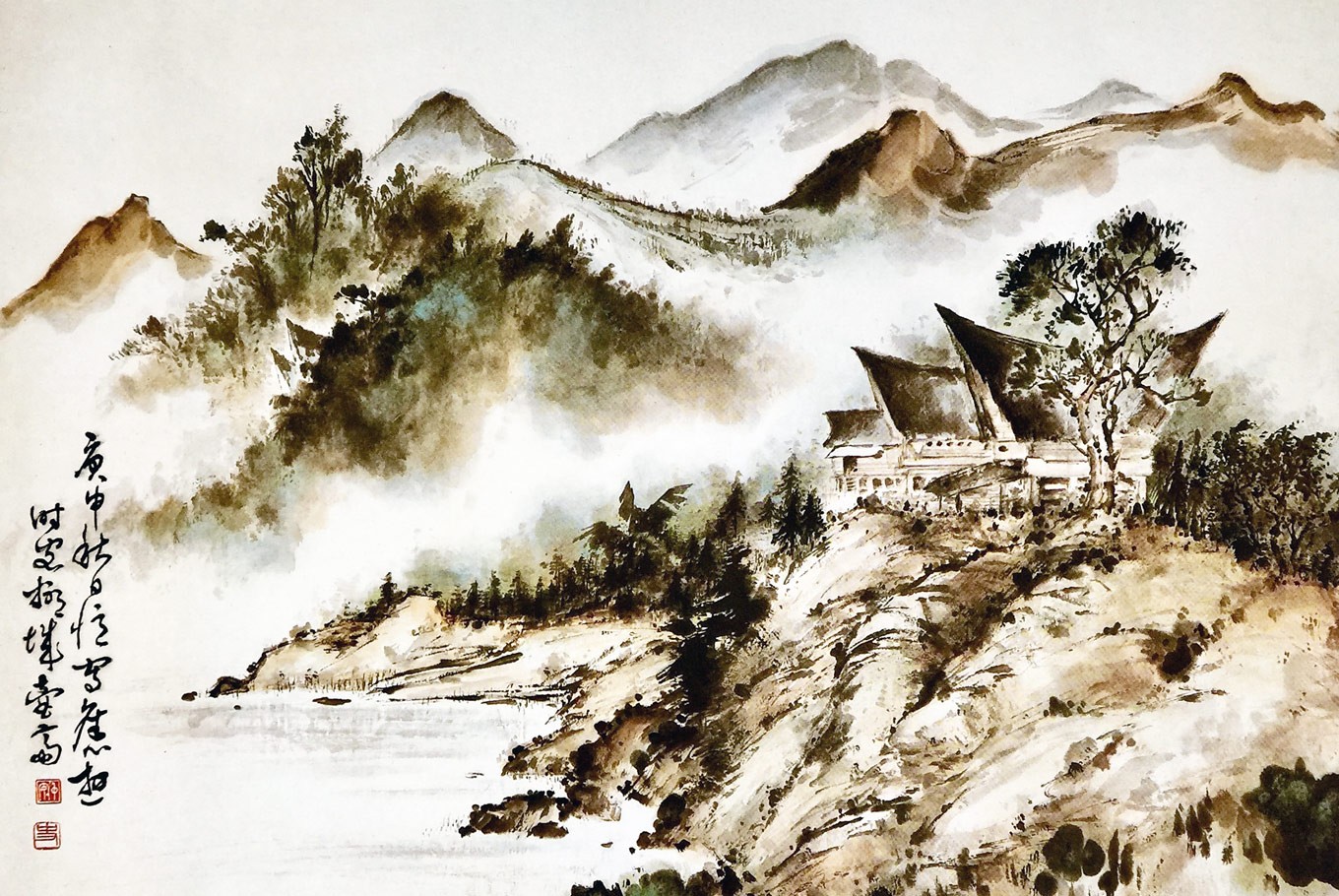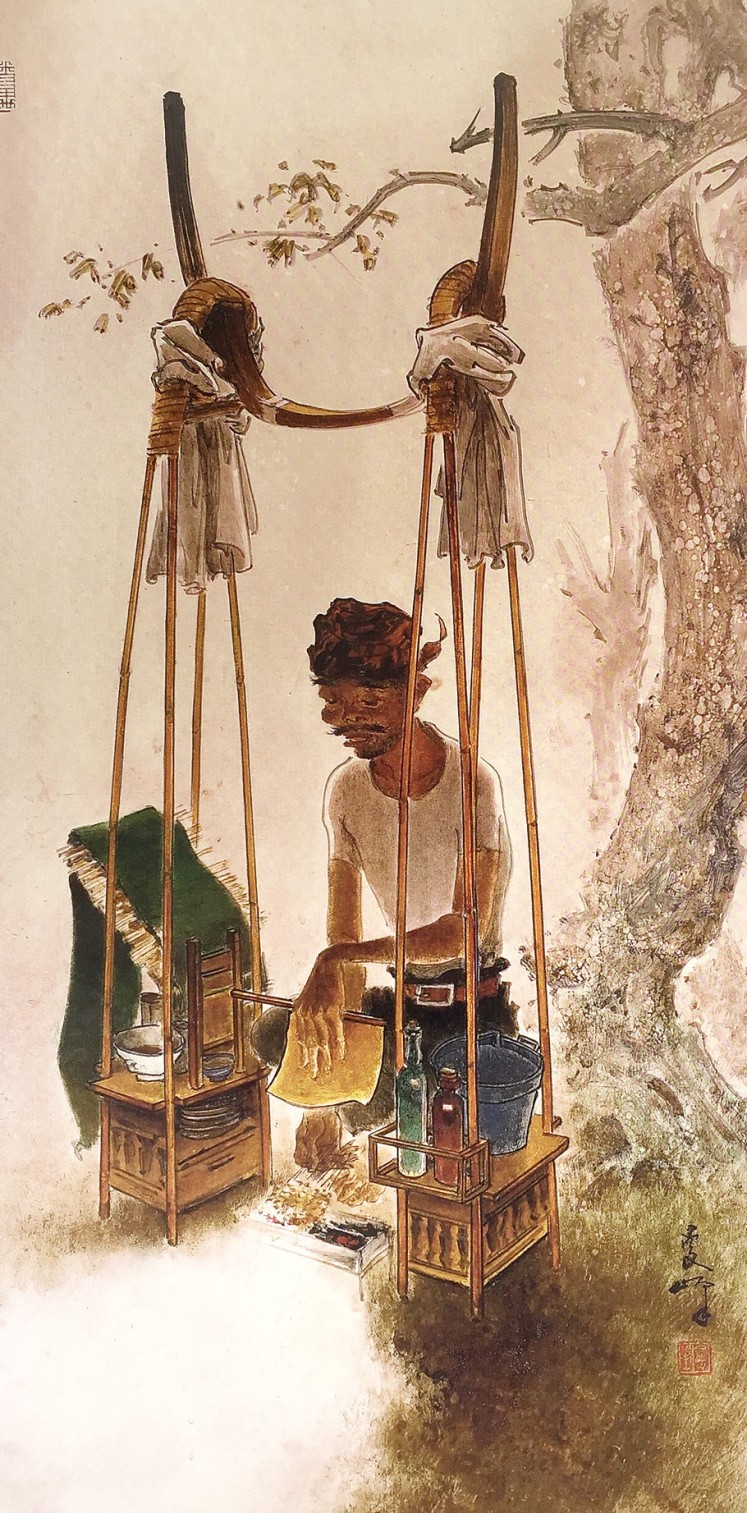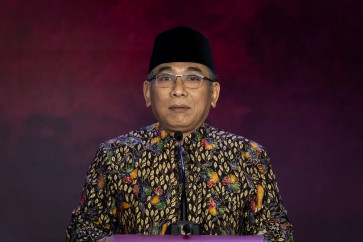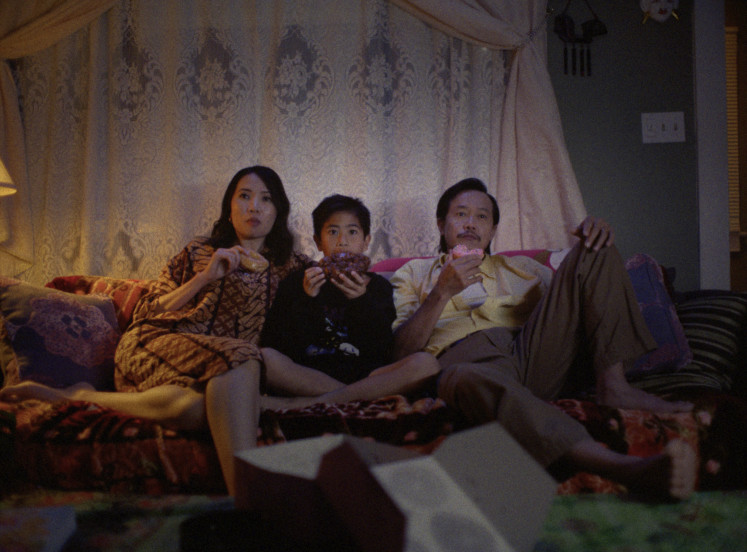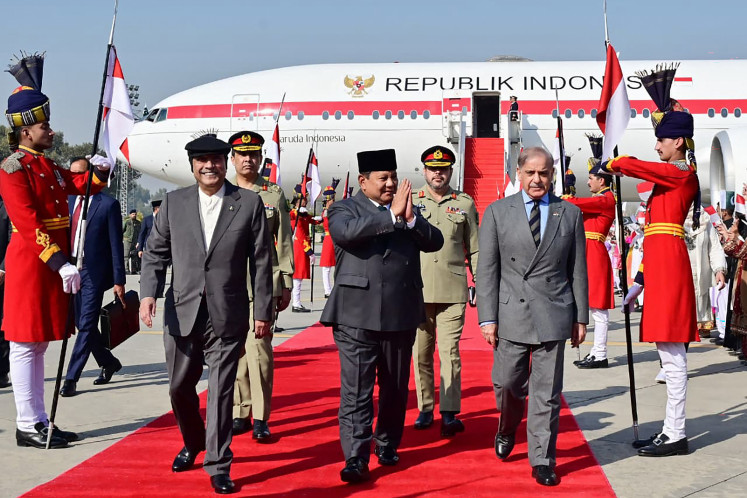Popular Reads
Top Results
Can't find what you're looking for?
View all search resultsPopular Reads
Top Results
Can't find what you're looking for?
View all search resultsChinese visual art before 1965
Chinese visual art, flourishing since 1950, was on the wane following the Sept. 30, 1965 movement.
Change text size
Gift Premium Articles
to Anyone
T
he dark cloud of Indonesian politics in 1965 buried the brightness of Chinese visual art, including Yin Hua, a fine art organization that helped enrich the country’s cultural tapestry.
Chinese visual art, flourishing since 1950, was on the wane following the Sept. 30, 1965 movement. Entering the era of independence, the government realized that Indonesians of Chinese descent had the potential to enrich the mosaic of national arts.
The government vision stemmed from historical facts showing the ethnic Chinese population’s role in culture through various industrial products. The film industry gave rise to top stars like Riboet Rawit, Tan Tjeng Bok and Fifi Young. The publication industry was spearheaded, among others, by Kwee Tek Hoay, Liem Kim Hoo and Soe Lie Pit, who contributed to the development of the informal Malay language.
In the fine art sphere, a painting organization, Yin Hua, was established in Princen Park (now Lokasari) in West Jakarta in 1955. Yin means Indonesia and Hua China.
The ethnic Chinese art association was founded by Lee Man Fong, assisted by painters Ye Thay Hua and Ling Nang Lung, who also worked as executives. There was also CM Hsu, a writer and cultural observer. Yin Hua members frequently gathered at Tati photo studio in Mangga Besar, that was owned by Lee Man Siong a relative of Lee Man Fong.
At the time, president Sukarno was pleased with this association so much so that on Dec. 18, 1955, Yin Hua’s members were invited to attend a dinner at the Bogor Palace.
Yin Hua’s first exhibition, opened by the president on Jan. 7, 1956, was held at Des Indes Hotel in Jakarta. It later became Duta Merlin shopping center in the 1990s and Carrefour in the 2000s. Several years later, a sister organization, Chin Nien Mei Shu Yen Tsiu Hui, was founded by young Chinese painters.
Yin Hua’s activities in Jakarta inspired Liem Kwee Bing to set up Mung May in Malang, East Java. With both associations, ethnic Chinese visual art became more prominent and even became stronger in other areas.
Satay Seller by Lee Man Fong (JP/Agus Dermawan T.)Artists like Siauw Tik Kwie (Otto Suastika), Liem Tjoe Ing and Siauw Swie Tjhing (Chris Suharso), for example, became well known in Surakarta in Central Java, while Bandung in West Java had Lim Wasim and Huang Wei Hsing (Anton Kustiawijaya).
The government and fellow visual artists, who were proud of the heterogeneity and pluralism of that time, warmly welcomed Yin Hua. Its exhibitions, regularly organized at the Chineesche Handels Vereniging(Chinese Business Association) in Molenvliet West 175 (later known as Candranaya building on Jl. Gajah Mada in West Jakarta), were always crowded with visitors and government officials.
As expected, the paintings created by Yin Hua members were dominated by the Chinese painting style. The themes presented derived from the settings of Indonesia as a culturally rich tropical country.
According to Claire Holt in her book Art in Indonesia-Continuities and Change, Yin Hua’s achievements also attracted the attention of the Chinese government on the mainland. Yin Hua’s works were even exhibited in Peking (now Beijing) and Canton.
Sukarno described Yin Hua’s paintings, exhibited in China, as Indonesia’s cultural emissary. Painter Lim Wasim said the presence of Yin Hua’s paintings in China marked the start of strong bilateral cultural ties, which would later be called the “Jakarta-Peking Axis.”
Yin Hua’s artists took pride in their performances, feeling that they were truly Indonesian, although some of the painters were still citizens of China. They were even more elated when, in 1962, Sukarno named Lee Man Fong a presidential palace painter and Lim Wasim as his assistant.
The appointment was made when Dullah, who served from 1950 to 1960 as the presidential palace painter, resigned. After his appointment Lee Man Fong was promptly granted Indonesian citizenship.
President Sukarno was highly impressed with Lee Man Fong and Lim Wasim as palace artists especially after they completed the Puspita dan Margasatwa Indonesia (Indonesian Flora and Fauna) mural in the Ramayana Restaurant at Hotel Indonesia. The mural still hangs in the Hotel Indonesia Kempiski.
The glory days did not last long though as the dark cloud of Indonesian politics, in 1965, overshadowed the brightness of Chinese visual art. The Sept. 30 coup attempt, allegedly backed by the communist government of China, brought dire consequences to Chinese culture in the country.
In the post-1965 period, all Chinese cultural and linguistic expressions were eliminated from Indonesia by the New Order government under President Soeharto. Yin Hua was disbanded after Mung May’s earlier disappearance.
Under such circumstances, painters of Chinese descent, who were politically naive and unwilling to engage in politics, felt that they were being intimidated and feared for their lives. They eventually fled the country.
Lee Man Fong fled to Singapore, poster painter and book illustrator Wen Peor moved to Hong Kong; Tjeng Tjiam Hwie lived in solitude in Malang; Siauw Tik Kwie, the painter and creator of the comic strip Sie Djien Koei in Star Weeklymagazine, became an author of the Javanese philosophy of Ki Ageng Suryomentaram; young painter Tio Tjay fled to Brazil and Lim Kwee Bing worked as a trader.
Kho Wan Gie, who illustrated the cartoon Put On, was gone, only to emerge under the pseudonym Sopoiku. Lim Wasim remained a presidential palace painter until 1968. After quitting the palace, he wasn’t active as a painter for 10 years and disguised himself as a bread seller.
The suffering endured by the ethnic Chinese visual artists ended in 1998 after Soeharto stepped down.

